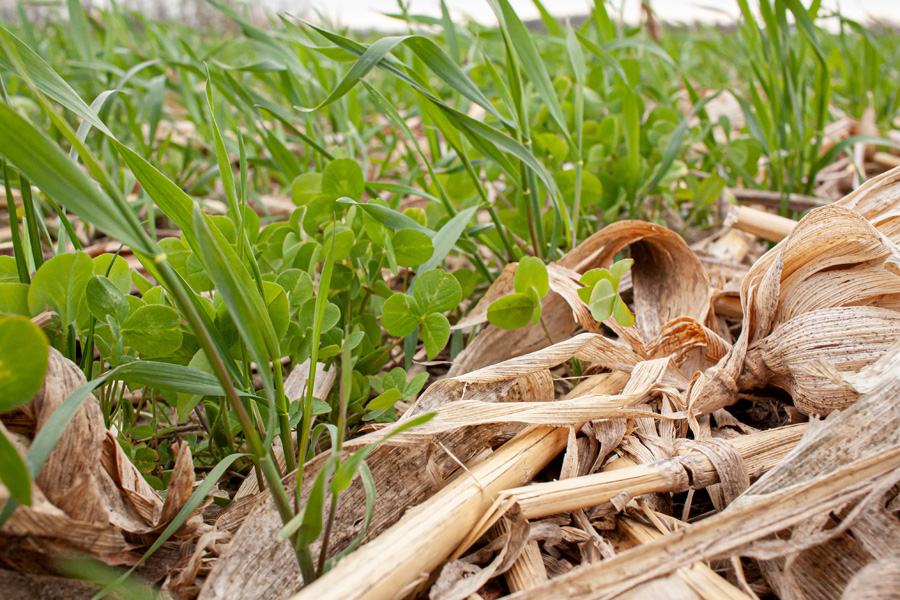
Industry Tackles Climate Change: Focus on Agriculture
Shifting weather and the resulting impacts on schedules and business continuity caused by climate change is a universal challenge spanning the globe and across industries. Whether it is drought or intermittent flooding causing field testing delays or more catastrophic events like wildfires and storms knocking out manufacturing, climate change’s ever-evolving impacts have become a part of our daily lives. As an integral part of the scientific and engineering communities, Waterborne experts are considering how our innovative solutions can contribute to the climate change challenges across the globe. We want to focus the start of our new series, “Working Through Climate Change,” right where our food supply starts – on the farm.
 Recent EPA data estimates that the US agricultural industry accounts for approximately 11% of national greenhouse gas emissions. On a global scale, agriculture combined with forestry and other land use practices accounts for approximately 24% of emissions. While contributing a quarter of the world’s emissions seems high, the challenges for the agricultural industry are unique since we must still consider a food supply for a growing global population. The industry as a whole is taking massive initiatives and setting steep goals to reduce the impact of agriculture on climate change while also preparing all elements of the supply chain for future impacts. Many industry leaders have followed suit with the Paris Agreement by pledging to reduce emissions and focus on grower-friendly solutions to decarbonize agriculture.
Recent EPA data estimates that the US agricultural industry accounts for approximately 11% of national greenhouse gas emissions. On a global scale, agriculture combined with forestry and other land use practices accounts for approximately 24% of emissions. While contributing a quarter of the world’s emissions seems high, the challenges for the agricultural industry are unique since we must still consider a food supply for a growing global population. The industry as a whole is taking massive initiatives and setting steep goals to reduce the impact of agriculture on climate change while also preparing all elements of the supply chain for future impacts. Many industry leaders have followed suit with the Paris Agreement by pledging to reduce emissions and focus on grower-friendly solutions to decarbonize agriculture.
With the knowledge that climate change could impact future activities and, in relation, our food supply and environment, many important management practices are being suggested and, in many cases, implemented at the farm level. Two examples are no-/strip-tilling and the use of cover crops, both of which may promote carbon sequestration by the soil. Both management practices are very impactful for reducing soil erosion and runoff, these same practices are also recommended mitigations for pesticide exposure in ecological risk assessment and, more recently, endangered species assessments. These practices are known to have synergistic effects on local ecological health. Both foster an extensive root system in the soil, which allows for water filtration. The crops and untilled residue offer protection and improved soil temperature and moisture (increased water holding capacity). The undisturbed soil increases carbon sequestration and nitrogen fixation. Also, soil erosion and runoff are reduced, keeping soil nutrients on the field.
What’s involved with each? A no-till farming practice involves planting seeds directly into the soil with the full, undisturbed residue from the previous crop. In a strip-tilling method, very narrow strips of rows are tilled only where the seeds are to be planted, allowing for fertilization of the small strips of soil. In between these strips, the ground remains undisturbed, thereby curbing runoff and promoting carbon sequestration in the soil. Cover crops can be planted for the purpose of maintaining field health, smothering weeds, and reducing soil erosion.
Beyond planting practices, our data and field scientists are working to help implement climate-smart farming practices in a number of ways. As the weather changes and impacts our clients’, we’ve had to design novel studies and instruments to conduct field experiments that still meet client needs in sometimes less than ideal conditions. Away from the field, we’ve developed technological solutions such as custom webtools that provide growers with a mobile resource to help make the best, most impactful decisions for their unique field characteristics.
These are but a few examples of how the agricultural industry is tackling climate change challenges. We’ll continue to adapt as the world changes.

Waterborne Environmental, Inc. Hired to Create Online Dashboard That Tracks Nutrient Loss Across the State of Missouri
READ MORE

Swimming with Bacteria: Water Quality Concerns at the 2024 Paris Olympics
READ MORE

The Right Tool – Multidimensional Models
READ MORE



